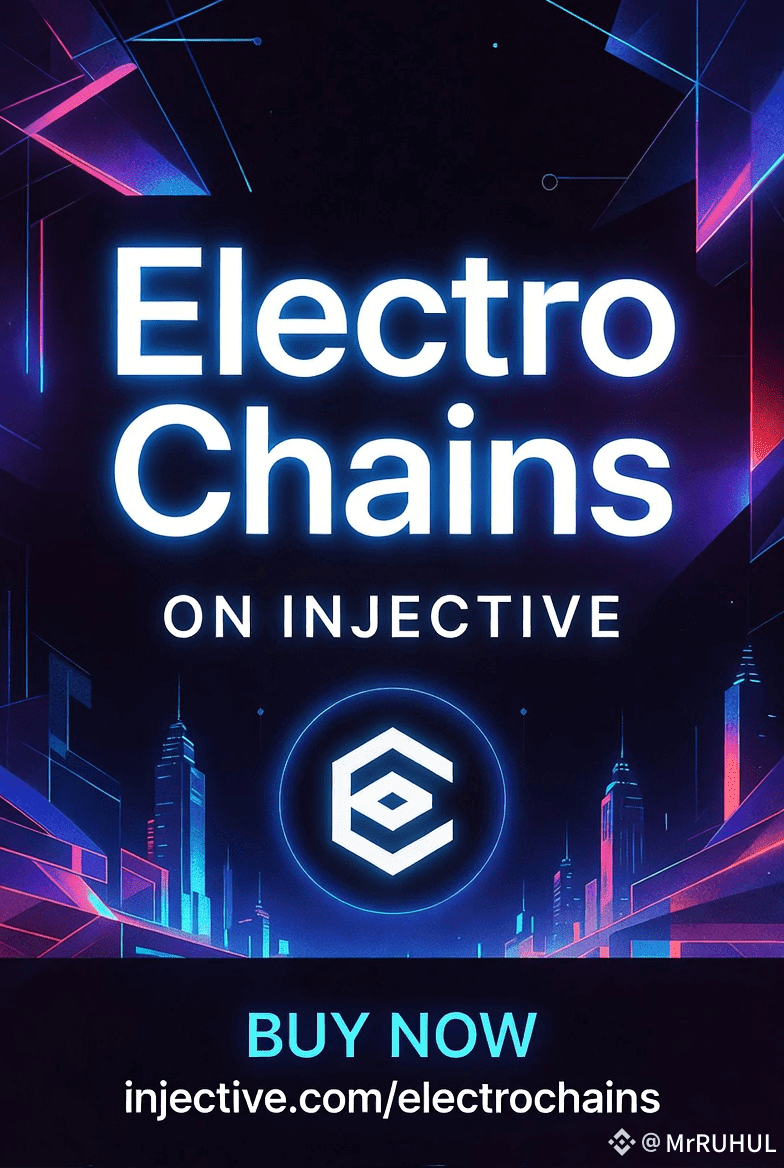Electro Chains on Injective work kind of like plug-ins—they let Injective run different virtual machines side by side. Right now, that means inEVM and inSVM. To keep it simple, these are special chains that connect directly to Injective’s main layer. With Electro Chains, Ethereum and Solana developers can bring their own tools, their own code, and launch straight onto Injective. No need to rewrite everything from the ground up.

Think of Injective as the finance powerhouse, and Electro Chains as the sidekicks, each one giving Injective some new superpowers.
1. So, what are Electro Chains, really?
At the heart of it, Electro Chains are:
Execution layers that plug right into Injective’s core chain
Built to run different VMs—EVM, SVM, and probably more down the road
Fully baked into Injective’s DeFi-focused design and tokenomics
The first two Electro Chains out are:
inEVM – this one’s for Ethereum developers. Solidity, Hardhat, Foundry—it all just works.
inSVM – built for folks used to Solana’s world, running Solana-style apps in Rust.
Both chains snap right into Injective’s strengths: advanced orderbooks, easy cross-chain moves, and the deflationary INJ token.
2. Why did Injective build Electro Chains at all?
First up: better interoperability. Injective already talks to Ethereum and Solana, among others, but Electro Chains go further. Now, EVM and SVM environments can actually run inside Injective itself, not just send tokens around.
Second: making developers’ lives easier. Instead of forcing everyone to pick up Cosmos SDK or CosmWasm, Electro Chains let:
Ethereum devs use inEVM with the tools they already know
Solana devs launch on inSVM with their usual Rust/SVM setup
So you get Injective’s speed and liquidity, without tossing out your whole workflow.
And of course, it’s about growth. More VM options mean more dApps—DEXs, perps, options, RWAs, games, you name it. And that means more users, more volume, more demand for INJ.
3. How do Electro Chains change Injective’s tokenomics?
INJ 2.0 opens the door: now every dApp on Injective—not just exchanges—can send fees to be burned. Electro Chains play a big role here, since they allow all sorts of new apps and transactions to flow through Injective, and all that action means more INJ gets burned.
Here’s what’s different:
dApps on inEVM and inSVM still feed into the INJ fee-burn system
More action on Electro Chains means more INJ burning over time
Electro Chains help cement Injective as a deflationary, finance-first L1 with multi-VM support
4. Why do Electro Chains actually matter for Injective?
Because they push Injective closer to being a real finance super-hub—right at the crossroads of Cosmos, Ethereum, Solana, and whatever comes next.
They create a place where multiple VMs share a single pool of liquidity. Traders and DeFi users can jump between VMs and still get all the perks of Injective’s tech: orderbooks, oracles, bridges, the works.
For institutional traders or more complex apps, Electro Chains make Injective even more appealing. Teams can stick with the VM they like best, but still tap into Injective’s deep orderbooks and cross-chain liquidity. It just makes building—and trading—here way more flexible.@Injective #Injective $INJ

